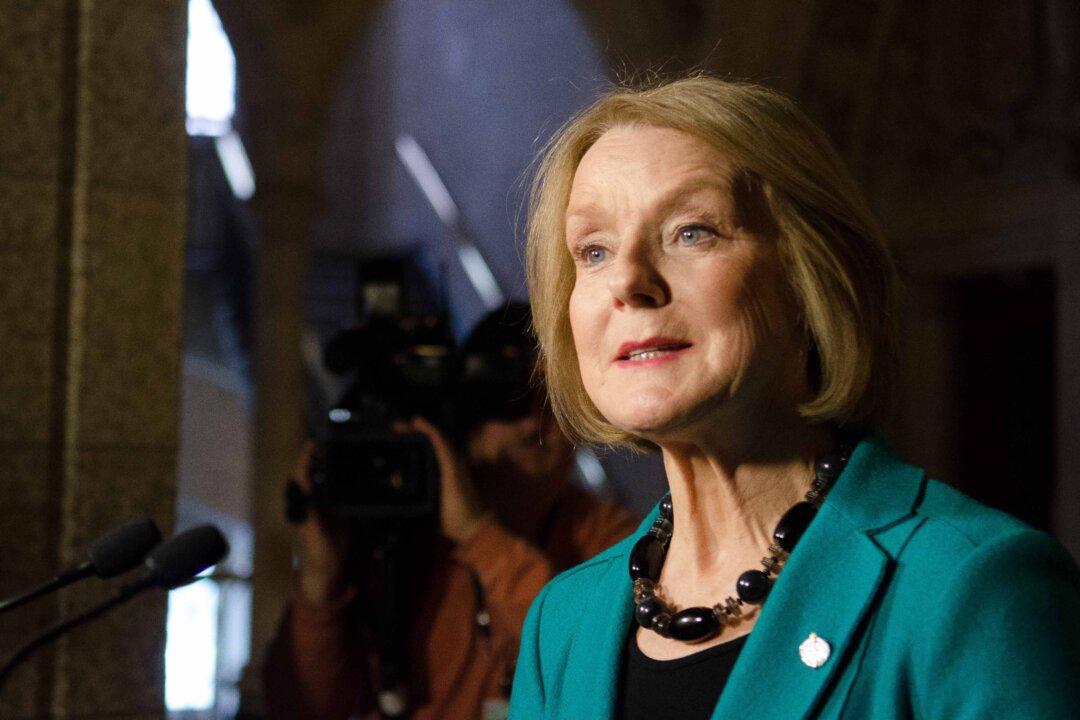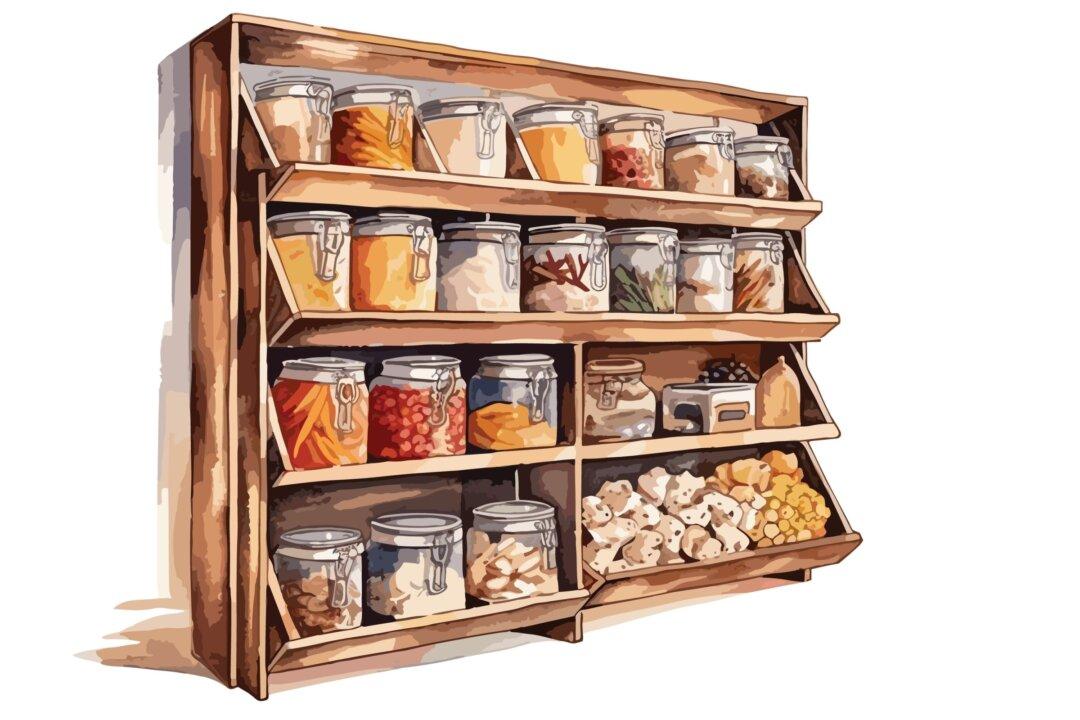PARLIAMENT HILL—Everyone has advice for Finance Minister Jim Flaherty before he drops the budget on Feb 11. But he likely isn’t interested in much of it.
Flaherty has firm ideas about how the country should handle its finances: cut spending, get to balanced budgets, and spur the economy with low taxes that most benefit job creators like corporations and small businesses.
Expectations are low for the coming budget. It will be a stay-the-course affair and Flaherty is more concerned with keeping his promise to get back to balanced budgets by 2015 than surprising Canadians with goodies.
That is likely why the budget will drop between the luge and snowboarding Olympic events when Canadians will be watching their fastest and fittest fight for gold.
And while the New Democrats aren’t likely to praise Flaherty’s budget, the Official Opposition isn’t offering up much of an alternative either.
NDP Budget Tweaks
NDP finance critic Peggy Nash was tight-lipped on what exactly an NDP government would do differently when asked repeatedly on Wednesday.
Nash outlined four proposals that constitute the party’s firm alternatives to the Tory budget. While the NDP will give sweeping criticism of the Tories’ approach, the proposals comprise what the NDP is specifically calling for.
The measures have a populist bent: cap ATM and credit card fees; create jobs with small business tax incentives; bring back the EcoEnergy retrofits program; and reverse the cuts at Veterans Affairs.
The job measure would give small businesses a $1,000 tax credit for new hires. A second credit would be available to any business that hires a young person with an additional $1,000 credit for training if applicable.
Nash said the credits would offset the cost of CPP and EI, and boost employment. The small business credit would cost $100 million, the youth credits around $55 million.
“We think these are practical, affordable measures that will target some of the worst unemployment problems we have,” she said.
As far as credit cards go, Nash wants banks to offer a no frills, no points card with an interest rate pegged at 5 percent above prime.
Beyond that, and calls for accelerated infrastructure spending, Nash would only say that the NDP would not raise personal income taxes and wouldn’t sacrifice economic growth for balanced budgets.
“You really have to balance the desire to return to balanced budgets with allowing the economy the opportunity to grow,” she said, adding the government was doing the opposite.
CCPA Alternative Budget
Thirty minutes prior, however, the Canadian Centre for Policy Alternatives (CCPA) offered up a more sweeping vision of what the budget should look like.
The group says Flaherty is mismanaging the economy by giving tax cuts to people who don’t need them rather helping the incomes of average Canadians who have buoyed the economy by taking on record levels of household debt.
The CCPA would raise taxes slightly for top earners and create a new 35 percent tax bracket for those making $250,000 or more, which would collect $2.5 billion in additional taxes. Current personal tax rates max out at 29 percent for income over $136,270.
They would also roll back corporate tax cuts to 2007 rates of 22 percent rather than the current 15 percent—a move they claim would bring $9.8 billion to federal coffers. An additional $1.75 billion would come by raising the small business tax rate from 11 percent to 15 percent.
The CCPA says their plan aims to alleviate poverty while fuelling economic growth.
CCPA Senior Economist David Macdonald said Canada has a disproportionate number of children living below the poverty line.
The group’s alternative budget would increase incomes for the bottom 60 percent of families, while the upper middle class would pay approximately two percent more of their incomes. Those making more than $150,000 would pay an additional 6 percent, much by losing access to tax loopholes.
Macdonald denounced the income splitting plan the government wants to put in place, saying it would do nothing for 86 percent of families.
“Income splitting would provide the richest 5 percent of families with an average increase in income of over $1,000 while the bottom 60 percent would see an average gain of about $50, further exacerbating income inequality.”
The Tories have made income splitting the golden nugget to be delivered in 2015 after the country returns to balanced budgets. It would allow high earners to split their income with a spouse to qualify for a lower tax bracket. It’s a plan denounced by groups on both sides of the political-economic spectrum.
The CCPA would keep that money and spend it on core infrastructure, transit, housing, and provincial initiatives for early education and post-secondary education.
The Other Side
While the NDP and CCPA generally support government spending to spur economic growth, the Fraser Institute and C.D. Howe Institute would rather see the government shrink its economic footprint and let the private sector pick up the slack.
Both institutes worry the government is basing its plans on overly optimistic revenue projections.
To keep on its timeline to balance the budget by 2015, the Fraser Institute’s Sean Speer argues that the government should cut spending and can do so without hurting programs Canadians rely on.
“Some low-hanging fruit includes corporate welfare spending and subsidies to inefficient Crown corporations such as Via Rail,” he wrote Wednesday.
The think tank also wants government workers to take a hit on pensions and age of retirement, as well as wages.
Both institutes also want an end to the Tories’ complex tax credits, and echo the CCPA’s call for the government to ditch its promise to offer income splitting.
The C.D. Howe Institute put forward its own shadow budget at the end of January with a strong emphasis on reining in the cost of federal employment, particularly defined benefit pension plans.
The institute says the average cost of full-time workers in the federal public service has nearly doubled in the decade from 2003 to 2013, from about $66,500 to $127,400.
“Over the same period, business sector compensation per job in Canada rose only about a third, from about $38,600 to $52,100,” states the shadow budget.
Public sector pension plans represent an ongoing and costly liability that needs to be fixed, says the institute.
While average Canadians stake their retirement on investments in the market, returns there are much slimmer and far more uncertain than those offered by government pension plans that guarantee payouts.
Those payouts are an ongoing cost to taxpayers who make up the shortfall for investments the government made to fund those pensions, as well as health care plans that have no assets at all.
C.D. Howe wants federal employees to assume more of the cost and risk of those plans.
By paying out $1.9–$3.3 billion less to federal government employees, C.D. Howe says the government can lower taxes. That pay cut would also lower competition for workers, and private sector employers could expect to pay lower wages or offer fewer benefits, and instead use that money for additional hiring or other investments.
It’s a suggestion that would be unsettling for the CCPA, which sees a unionized workforce as a guarantor of middle class wages.
C.D. Howe also wants income taxes dropped one percent to be compensated with a one percent rise in the GST. The group’s budget claims such a change would be cost neutral and could bring in $900 million in federal revenue and $800 million a year for provincial governments because income taxes discourage people from working, especially single mothers and second earners in couples with children.
It’s unlikely that anyone will be entirely pleased when Flaherty tables his budget. The government will no doubt argue that that proves it found a balance of competing interests, while critics will say it’s because it is a do-nothing budget.





